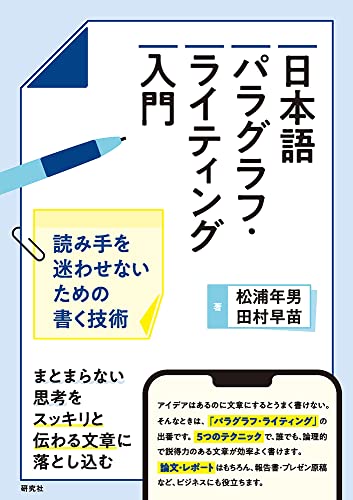13 0 0 0 IR 大学初年次の文章表現教育における「レビュー論文」作成の試行
- 著者
- 松浦 年男 田村 早苗 石垣 佳奈子 岡田 一祐 高木 維 吉村 悠介
- 出版者
- 北星学園大学
- 雑誌
- 北星学園大学文学部北星論集 = Hokusei review, the School of Humanities (ISSN:0289338X)
- 巻号頁・発行日
- vol.53, no.2, pp.47-55, 2016-03
5 0 0 0 OA 大学初年次の文章表現教育における「レビュー論文」作成の試行
- 著者
- 松浦 年男 田村 早苗 石垣 佳奈子 岡田 一祐 高木 維 吉村 悠介
- 雑誌
- 北星学園大学文学部北星論集 = Hokusei Review, the School of Humanities (ISSN:0289338X)
- 巻号頁・発行日
- vol.53, no.2, pp.47-55, 2016-03
2 0 0 0 OA 様相論理にもとづくタメニの分析試論 : 「目的」と「因果」の接点
- 著者
- 田村 早苗
- 出版者
- 京都大学大学院文学研究科言語学研究室
- 雑誌
- 京都大学言語学研究 (ISSN:13497804)
- 巻号頁・発行日
- vol.28, pp.159-184, 2009-12-25
In this paper, we discuss the connective tameni in Japanese, which expresses that the antecedent event is either a ‘purpose’ or a ‘cause’ of the consequent event. Each use is illustrated by (1a) and (1b), respectively. (1) a. Atarasii new kuruma-o car-acc kau buy tameni okane-o money-acc tameteiru. is.saving b. Yuki-ga snow-nom futta fell tameni samuku cold natta. became The aim of this paper is to give the basic semantics of tameni which can explain both of the interpretations. Our analysis is based on Kratzer’s (1981,1991) modal logic. According to her system, modalized expressions are interpreted relative to two kinds of conversational background: the modal base (=f ) and the ordering source (=g). Formally, both are defined as a function from worlds to sets of propositions, but the output sets f (w) and g(w) have different roles. Roughly speaking, f (w) includes the presupposed proposition about the fact/circumstance, while g(w) refers to an ‘ideal’. We propose that the two uses of tameni differ only in the type of modal base used in interpreting the sentences. When the antecedent of tameni is interpreted as the purpose, the proposition referred to by the antecedent is put in the teleological MB. On the other hand, when the antecedent refers to the cause, the proposition is included in the circumstantial MB. Most of the previous analyses assume that purposes serve as an ordering source, namely, the teleological ordering source. We show that purposes should be treated as a modal base, as far as the ambiguity between purposes and causes concerns.
- 著者
- 松浦年男 田村早苗著
- 出版者
- 研究社
- 巻号頁・発行日
- 2022
1 0 0 0 OA 北星学園大学における日本語ライティング個別支援の試み
- 著者
- 松浦 年男 田村 早苗 石垣 佳奈子
- 雑誌
- 北星学園大学文学部北星論集 = Hokusei Review, the School of Humanities (ISSN:0289338X)
- 巻号頁・発行日
- vol.56, no.1, pp.1-13, 2018-09
1 0 0 0 OA 1995年「国勢調査」データを用いた林業就業者のコウホート分析
- 著者
- 田村 早苗 永田 信 立花 敏 大橋 邦夫
- 出版者
- 林業経済学会
- 雑誌
- 林業経済研究 (ISSN:02851598)
- 巻号頁・発行日
- vol.44, no.1, pp.93-98, 1998-03-20
- 参考文献数
- 2
- 被引用文献数
- 4
1955〜95年の「国勢調査」産業別就業者数のデータを用いてコウホート分析を行なった。全産業と建設業はほぼ同様なコウホート分布を示し,農林漁業と全産業とは全く異なる分布形態を示した。55年以降の農林漁業における労働の中心的世代は1930〜40年生まれコウホートで,全産業に比べて高齢化が顕著である。また,世代交替が行われていないことも全産業との大きな相違であった。年令階層別に見ると,15〜19歳の純参入は急激に減少した。また,75〜80年と90〜95年にかけての2つの期間で50歳以下の幅広い年代で参入の超過が見られた。しかし,そのコウホート比は非常に小さく,この年齢層の参入超過が構造化するには至っていない。林業就業者の減少は55〜65年に集中していた。前半は25〜29歳を中心に退出が大きく,後半は広範な年齢層に広がった。高度成長期,まず若い人達が他産業から求められ,その後さらに多くの労働力が求められた様子が観察できた。将来的に広範な年齢層で減少が続けば林業就業者は1万2千人と推計される。しかし,中年層以下の参入超過が構造化すれば3万人と推計された。

